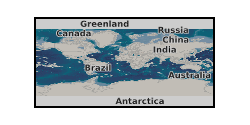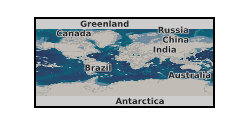Ultrasonic techniques
Type of resources
Available actions
Topics
Keywords
Contact for the resource
Provided by
Years
Formats
Update frequencies
Scale
-

This dataset contains raw experimental high temperature and acoustic emission testing data on ‘Comiso’ limestone samples as outlined in "Castagna, A., Ougier-Simonin, A., Benson, P. M., Browning, J., Walker, R. J., Fazio, M., & Vinciguerra, S. (2018). Thermal damage and pore pressure effects of the Brittle-Ductile transition in Comiso limestone. Journal of Geophysical Research: Solid Earth, 123(9), 7644-7660.s, http://dx.doi.org/10.1029/2017JB015105". The data is provided in a .zip folder for 2 experiments that are accompanied by a README file for introduction. Files format are Microsoft Excel Worksheet (.xlsx) and data are tabulated. Each file contains the corresponding relevant sample’s details and each column of data is clearly labelled, units included. For each experiment, local time, corrected time, temperature (in degrees Celsius), acoustic emission amplitude (in decibels) and counts were recorded. Cylindrical samples of ‘Comiso’ limestone samples (Ragusa Formation; Sicily) were heat-treated to investigate the effects of thermal stressing on the limestone’s microstructure. In all tests, a controlled heating rate of 1 °C/minute was applied, keeping the specimen at the desired maximum temperature for 30 minutes to allow complete temperature equilibration followed by natural cooling (generally less than<1 °C/minute). The experiments were conducted on the Carbolite CTF12/75/700 tube furnace of the Rock and Ice Physics Laboratory of the University College of London between the 22nd and 28th February, 2016. The experiment were conducted by Drs A. Castagna and J. Browning, both responsible for the collection and interpretation of the data.
-

NERC grant NE/R013535/1. Here we present the dataset collected during a brine-CO2 flow-through test using a synthetic sandstone with oblique fractures, performed under realistic reservoir conditions stress. We monitored geophysical, mechanical and transport properties, for drainage and imbibition conditions, representative of the injection and post-injection stages of the CO2 storage process. We collected ultrasonic P- and S-wave velocities and their respective attenuation factors, axial and radial strains, electrical resistivity, pore pressure, temperature and brine and CO2 partial flows (from which relative permeability was later calculated).
 NERC Data Catalogue Service
NERC Data Catalogue Service